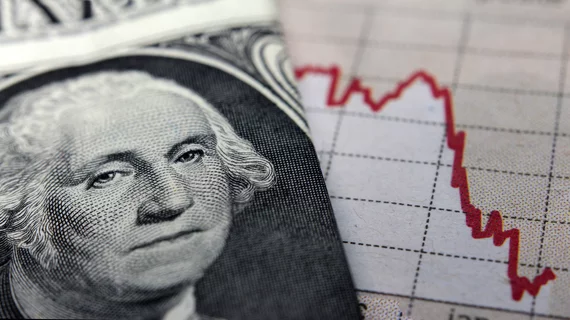Imaging’s total share of US healthcare spending plummets as others record gains
Imaging’s aggregate share of U.S. healthcare spending plummeted as hospitals and other segments of the industry gained a greater share, according to new Neiman Health Policy Institute research published Wednesday.
Between 2010 to 2021, overall spending on radiology services leapt nearly 35.9%. However, expenditures on other healthcare use swelled to a greater degree, with imaging’s share of total spending dropping from 10.5% to 8.9%, experts detailed in Health Affairs Scholar [1]. Spending on all other services, meanwhile, climbed almost 63.7% during the same timeframe.
The percentage of patients who received imaging services also declined from 46.2% in 2010 down to 40.3% by the end of the study period. However, those who were scanned underwent more exams, researchers reported.
“While our findings cannot speak to the appropriateness of imaging, they do highlight important trends,” study co-author Richard Duszak, MD, with the University of Mississippi Medical Center, said in a March 27 announcement. “What needs further study is whether this is related to more judicious use of imaging, barriers to imaging related to burdensome preauthorization and/or other factors,” he added.
For the study, researchers used data from Merative MarketScan, which offers one of the largest commercial insurance claims databases representing 34 million patients per year. They also identified other imaging-related services such as administration of contrast material, along with facility fees stemming from radiology claims.
Overall growth of nominal imaging prices increased 22.5% during the study period, but this figure was below inflation of 24.3%, as measured by the consumer price index. Major contributors to imaging spending growth were increased use of such services (7.4 percentage points), shifts in care settings and provider network participation (4 percentage points), and demographic changes (3.5 percentage points). These care setting- and provider network-related shifts led to 2.5 and 0.3 percentage point drops in imaging spending, respectively.
Those involved with the study believe their data are proof that healthcare policies and initiatives to reduce imaging spending are working.
“As such, policymakers working to curb healthcare spending should consider translating successful policies from imaging to other types of healthcare services, as long as patients maintain access to high-value care,” the authors concluded. “As noted by others, targeting hospital prices may be the most effective way to curb spending growth, because hospital prices comprised the majority of spending growth. Nonetheless, opportunities to further decrease imaging spending may still exist. Specifically, the growth of imaging in the costly ED setting is concerning and deserves closer scrutiny, especially if some of these examinations could have been performed in more cost-effective nonemergency outpatient settings.”
Read much more about the results at the link below.

